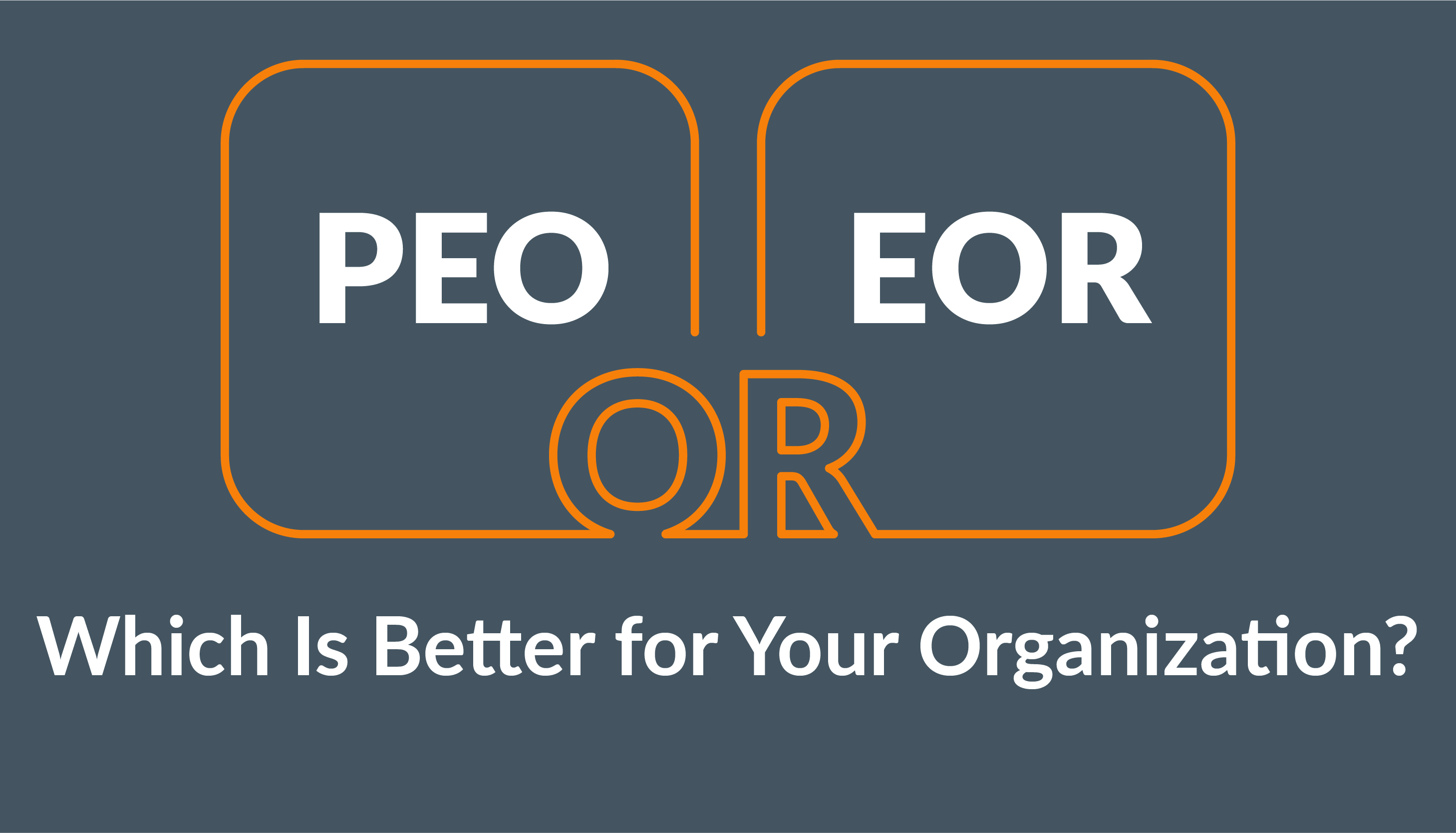PEO or EOR – Aren’t They the Same? Which Is Better for Your Organization?

Professional Employer Organizations or ‘PEOs’ provide a valuable service to business organizations interested in outsourcing their workforce management or human resources functions. This post will explain the basic definition of the PEO solution. It will also clarify some of the confusion around the difference between a PEO and the Employer of Record (EOR) solutions which are frequently (and incorrectly) regarded as interchangeable with PEOs.
PEOs typically provide services to SMBs (small to mid-sized businesses) including HR consulting, onboarding/offboarding, worker reviews, payrolling services, tax filings, health insurance and benefits administration. PEOs are co-employers with their customers and become the employer of record for their customers’ employees, filing payroll taxes under their own tax ID numbers. You might be thinking, “This sounds pretty much the same as an EOR service, so what’s the difference?” While similar in many ways, there are significant differences between a PEO and an EOR. To understand the distinction, first take a moment to review our earlier post, “What Is an EOR & How Do You Know if You Need One”, which provides a solid definition of the EOR model. Go ahead and take a moment to read it. We’ll wait here.
You’re back? Great! So, much of the difference between the PEO and the EOR comes down to workforce strategies. Specifically, does your strategy frequently involve the use of contingent workforce elements (temps, SOW/project workers, freelance contractors, etc.) for addressing short-term projects? Or are you seeking to outsource the overall HR function for your full-time workforce from onboarding to benefits administration? If your posture reflects more of the former, you probably don’t need a PEO, you need an EOR. Perhaps unsurprisingly, many professionals tasked with engaging third-party assistance in this regard incorrectly consider the PEO when the EOR makes more sense. Here’s why an EOR is the better solution for an organization regularly leveraging contingent labor.
The PEO is typically designed to deliver services for all employees in the customers’ organization. As such, they’ll typically require a minimum number of employees (usually at least 5 or 10). This makes the PEO more well-suited to managing long-term worker types. However, for the organization that has a solid, effective HR function but is seeking to leverage the extensive benefits of fielding contingent resources in a strategic fashion, the EOR is clearly the better choice. Not only because the EOR enables the limited-duration utilization of seasonal workers, contractors, and project-specific hires, but also because the EOR simplifies the process of engaging workers in multiple states.
A business must be registered in every state where they operate and employ workers. The registration process is time consuming and requires ongoing monitoring to ensure compliance with frequent changes to state-level regulations. If you’re leveraging contingent resources in a state other than the one where your organization is registered, the PEO will not address the registration process. On the other hand, the EOR allows an organization to engage workers in other states even if your company isn’t registered there. And since providers of niche talent can often reside in disparate locales, this flexibility is essential to best-in-class contingent workforce management.
The decision between engaging PEO and EOR is a tricky one and hiring organizations would be well-advised to seek the consultative assistance of experts like nextSource to help make the correct decision. Reach out today for a briefing on EOR services.
To read more on this subject, turn to nextSource for expert guidance and visit our employer of record page.
“